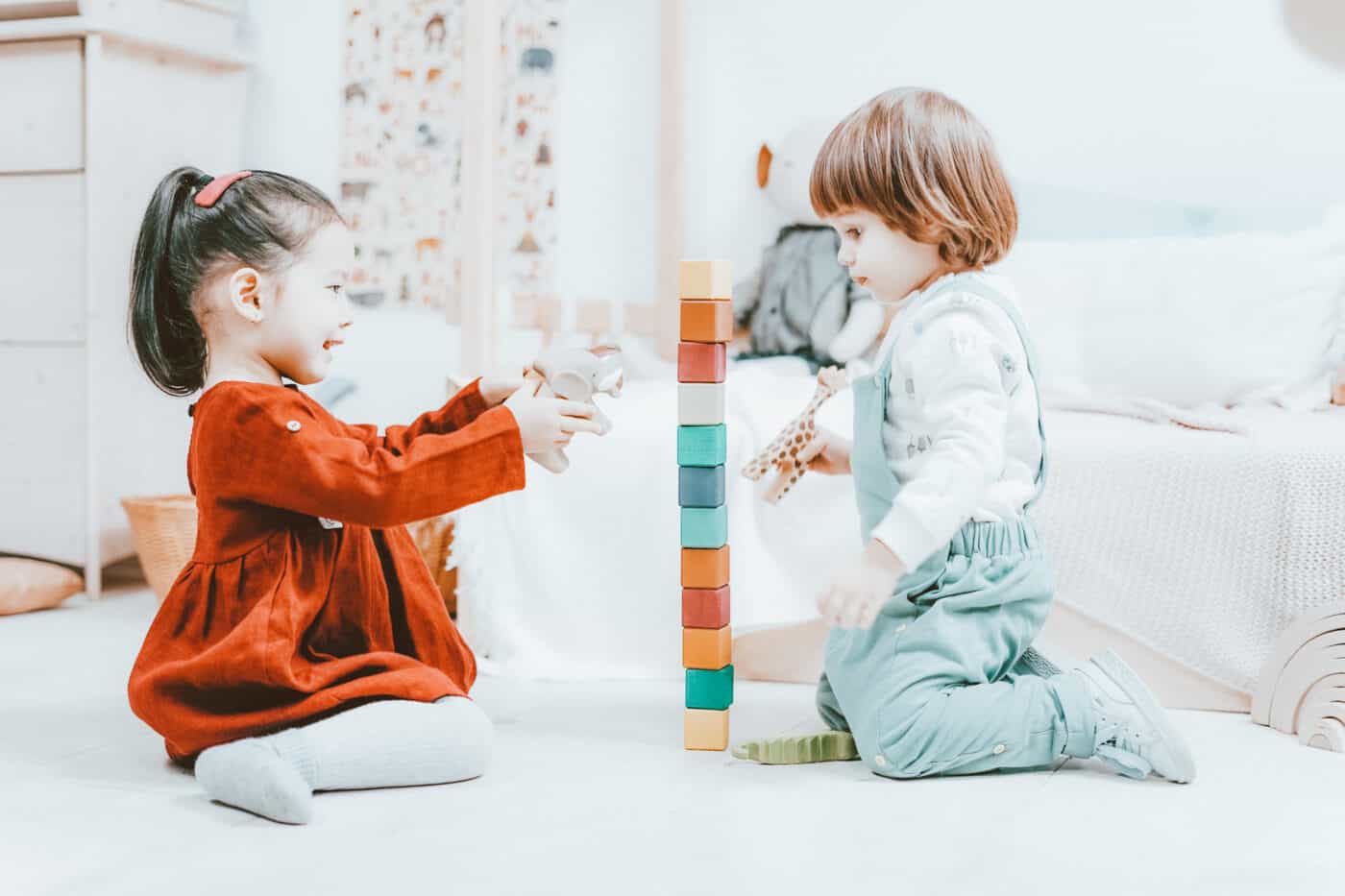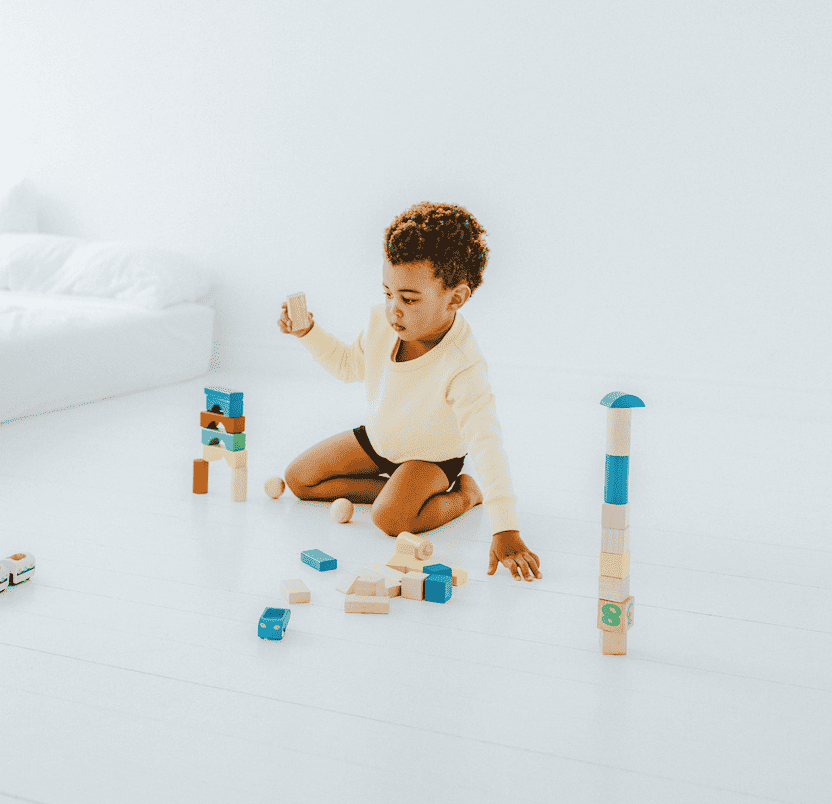Going Out to Dinner with Kids While on a Sleep Schedule
Floor Beds (aka Montessori Beds) and Sleep Training
Sleep is not an innate skill, but children are fully capable of learning to put themselves to sleep. Providing ideal awake windows, predictable routines, consistent expectations, and a great sleep environment allows sleep to come more easily for our little ones. As a part of this sleep environment, some families choose to use floor beds.
Freedom within Limits

Floor beds, also known as Montessori beds, are popular with the Montessori philosophy of parenthood to promote independence and “freedom within limits.” Giving children space to enjoy more autonomy and learn appropriate boundaries is possible, especially as it applies to consistent expectations around sleep and bedtime.
Floor beds can be successful for children that are already familiar with having freedom within limits. If a toddler has a lot of freedom and is used to having little to no limitations during the day, teaching him to stay on a floor bed all night is going to be very challenging. However, with a foundation of healthy boundaries and consistent expectations established during the day, children can learn to stay on a floor bed.
A Safe Room
Safety is of utmost importance in every scenario, but there are some special considerations when little ones are in floor beds. At Sleep Wise Consulting, we are willing to work with floor bed clients when infants are above 6 months old. However, there are several important safety factors to acknowledge ahead of time. When children have freedom to get out of bed, the safety of the whole room set-up is vital.
If you want to use a floor bed/Montessori bed early on, baby/child-proof the room entirely. Several aspects to address in advance include:
- According to the AAP recommendations, children under the age of two should always sleep on a firm crib mattress. A regular mattress of any size is too soft, so the risk for suffocation increases.
- Use only a fitted sheet on a floor bed for infants. Do not use rails.
- Keep floor beds away from the walls so that little ones cannot become trapped.
- Anchor all furniture to the walls.
- For children capable of climbing, remove non-anchored furniture from the room. (For example, move a dresser to the closet. For an infant’s room, use a changing pad on the floor with a shelf on the wall to store changing supplies.)
- Cover outlets. Self-closing outlet covers are helpful.
- Use cord covers for all cords.
- Forego lamps or heavy décor that can fall.
- Move small toys and objects that can become choking hazards to an alternative room.
- Affix window treatments to the wall safety so they cannot be pulled down. Use cordless blinds.
- Keep blankets out of the child’s reach.
- Close/ lock doors to prevent children from wandering, reaching stairs, etc. Use a doorknob cover or safety gate.
- Use drawer locks.
- Mount a video monitor in a corner to view the entire room easily.
With floor beds, children have complete access to the full room. Everything in the room should be safe for the child to interact with if he or she gets up while parents are sleeping.
Sleep Training on a Floor Bed
In a best-case scenario, children will already have healthy sleep habits and master self-soothing in a bassinet or crib prior to the introduction of a floor bed. This makes for a smoother transition for all parties. However, if you wish to teach independent sleep skills on a floor bed, it is possible.

Having a realistic view of the process allows you to be prepared and perseverant. Consistency is always a critical component to sleep training, but it is especially true when using a floor bed. Have a plan for setting boundaries clearly and predictably to help your child learn the expectations for sleep. In addition, ensuring your child’s needs are met prior to laying down is very important. This includes using age-appropriate awake times/ schedules, providing full feedings, and implementing a daily bedtime and nap time routine.
With less cognitive awareness and a lack of boundaries that a crib naturally provides, new habits take longer to form, but they are not impossible! During the learning process, many little ones may crawl, roll, or move off the mattress and choose to fall asleep outside of their beds. Over time, they will get more and more familiar with getting comfortable in the sleep space.
For older toddlers and school-aged children, child-friendly charts, visuals, repeated expectations, and a system of rewards vs. consequences helps solidify the skills. In our toddler packages, we provide all of the aforementioned for families. Also, it is helpful to talk about why sleep is so important (and we have the perfect book to recommend for that!). Find what motivates your little one. With all children, lots of praise, a calm tone while responding, special one-on-one time, and consistent reassurance goes a long way. Having a positive attitude throughout the process will build your child’s confidence. The more black and white a parent is, the faster a child understands exactly what to expect when rules are followed (or not!).
Patience is Key
As you embrace the floor bed journey, especially for children under age two learning to sleep independently for the first time, you also want to be aware that it will very likely take longer than it does when using a crib. Often, patterns to their sleep take longer to define. Children may attempt to open the door, and early morning wakings can be more difficult to solve.
With young toddlers, parents have to be patient in reinforcing expectations. Returning them to bed repeatedly will help them learn. An additional tool that is helpful for toddlers and young children is a sleep clock. It is the easiest way to allow your kiddos to take ownership of an appropriate time to rise to begin the day. Early morning tend to last longer when a child has the freedom to get up and start the day. Even as adults, after we have walked around our room, going back to sleep would be a challenge!
Practice and repetition, especially through big changes, is key. Mastering a new way of sleeping takes an average of 3 weeks, and it is absolutely doable with follow-through
Need a Floor Bed Expert?
If you wish to use a floor bed and want our one-on-one guidance through the process, we are here to help! We have consultants highly experienced in floor beds specifically. Schedule now to get started!


